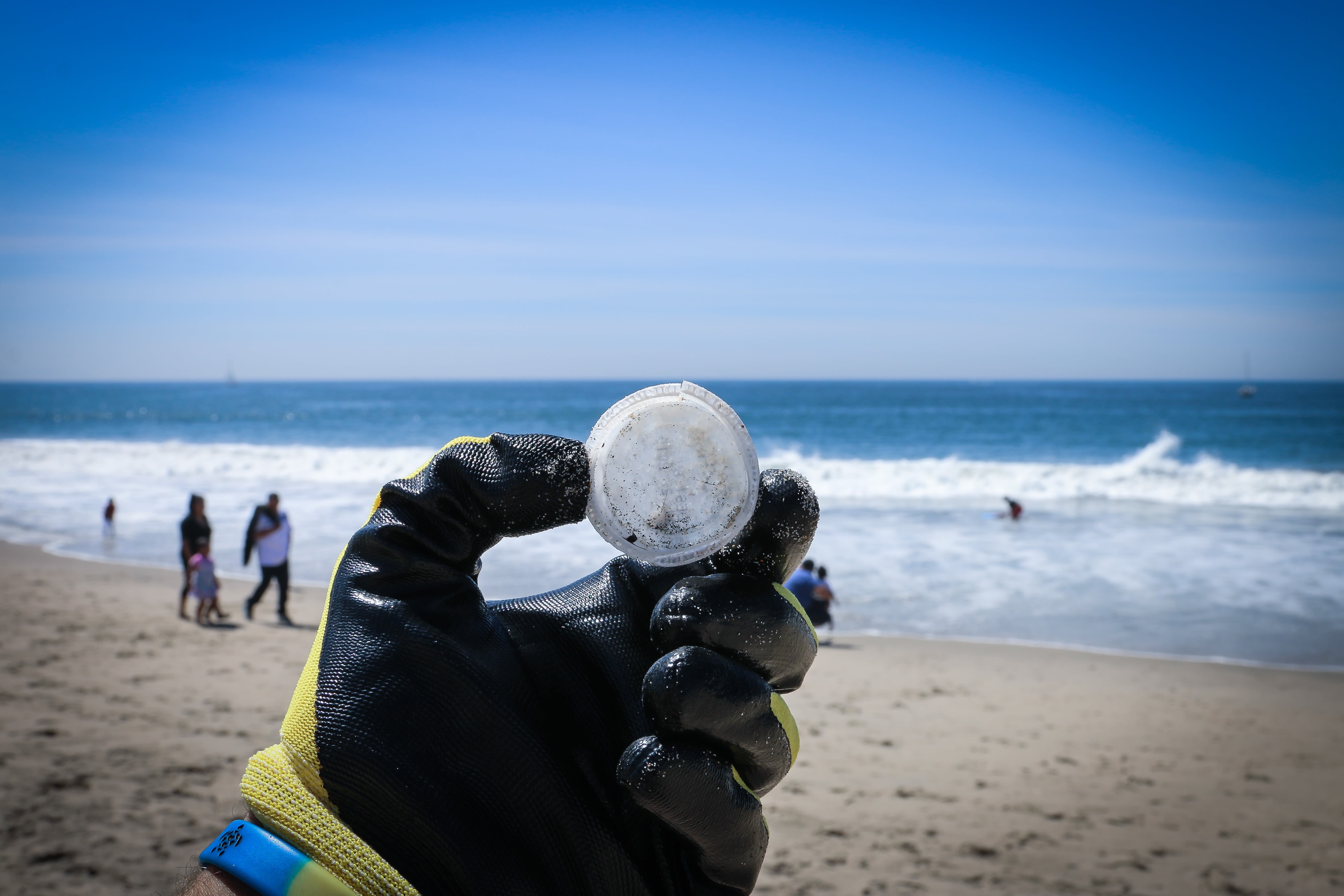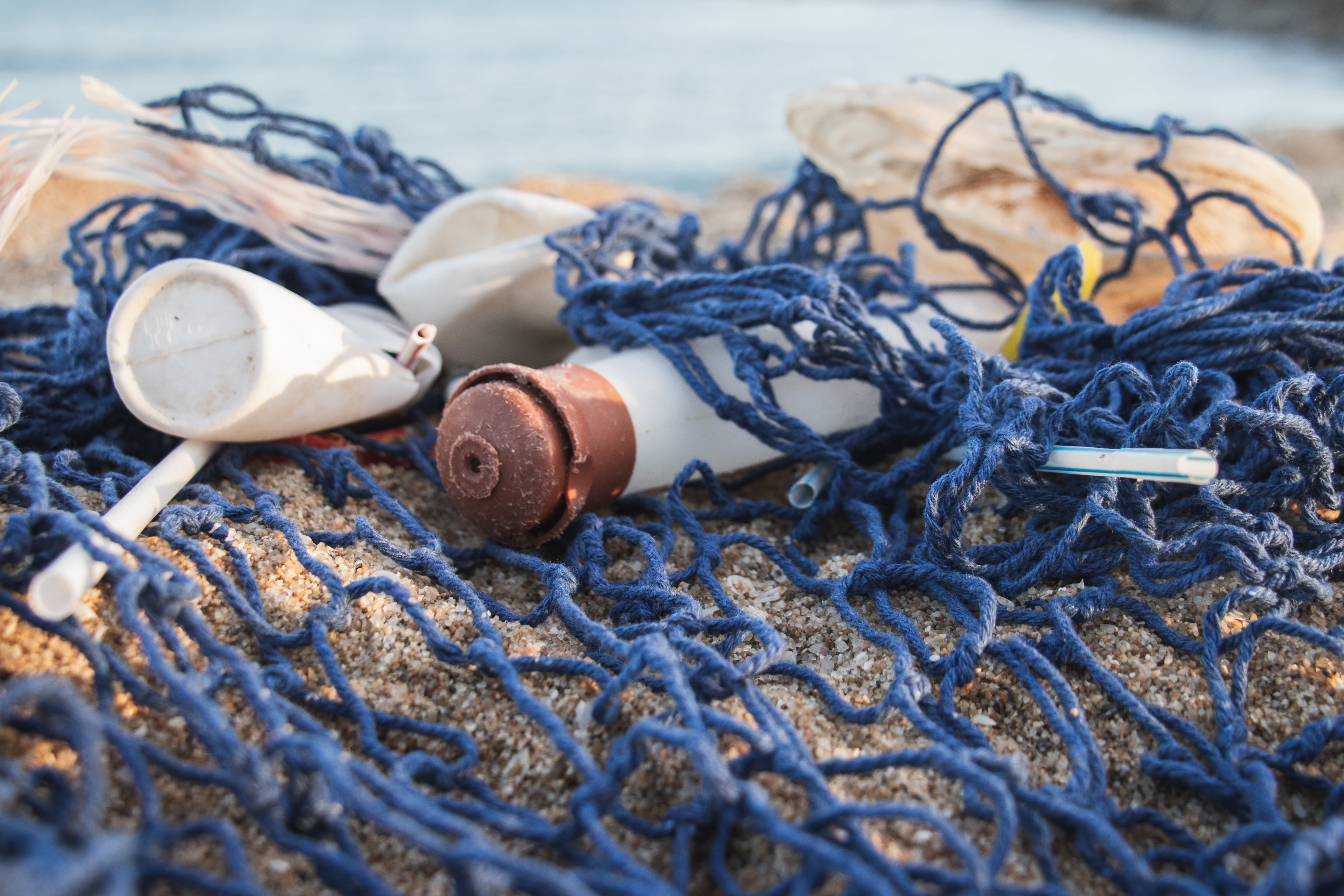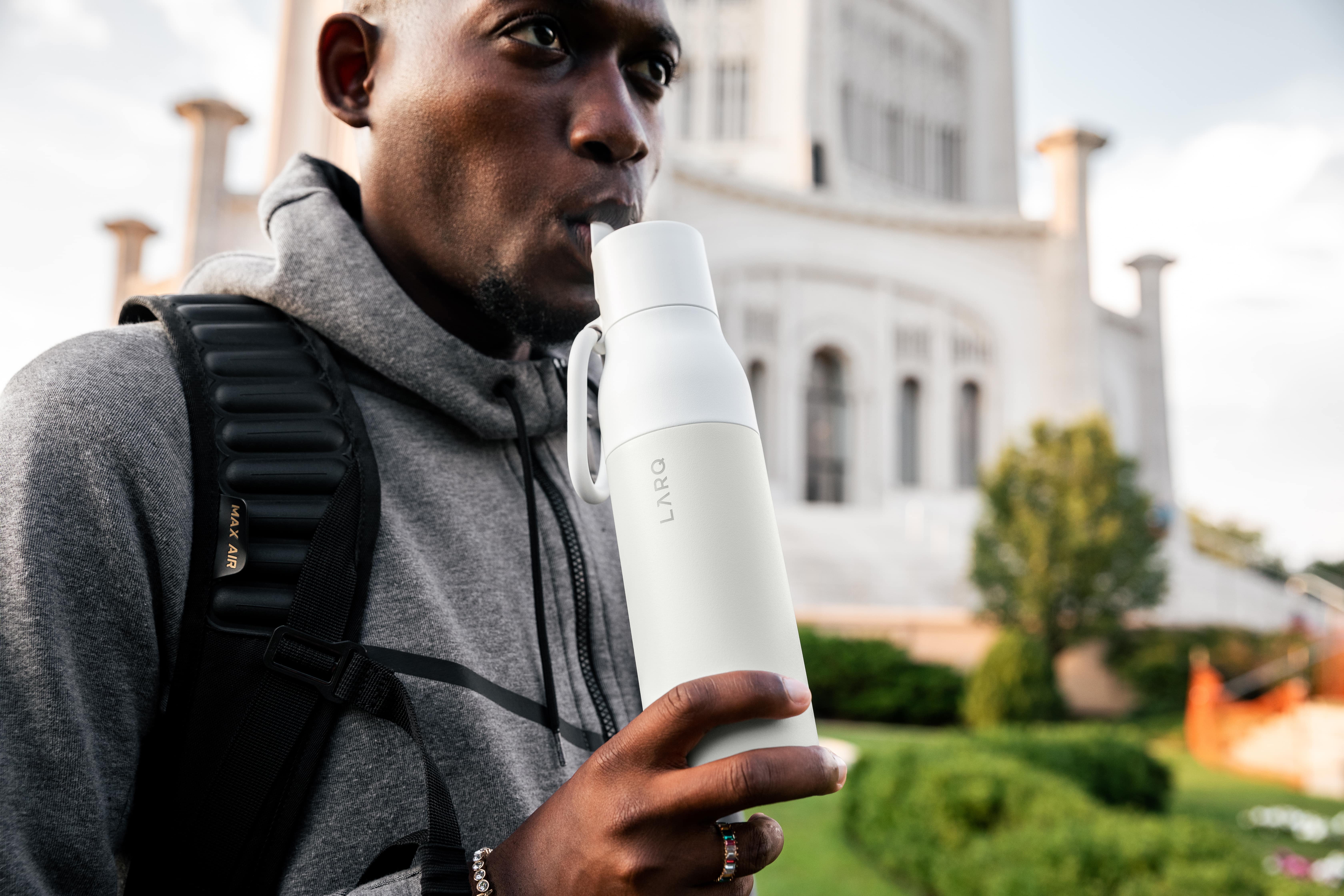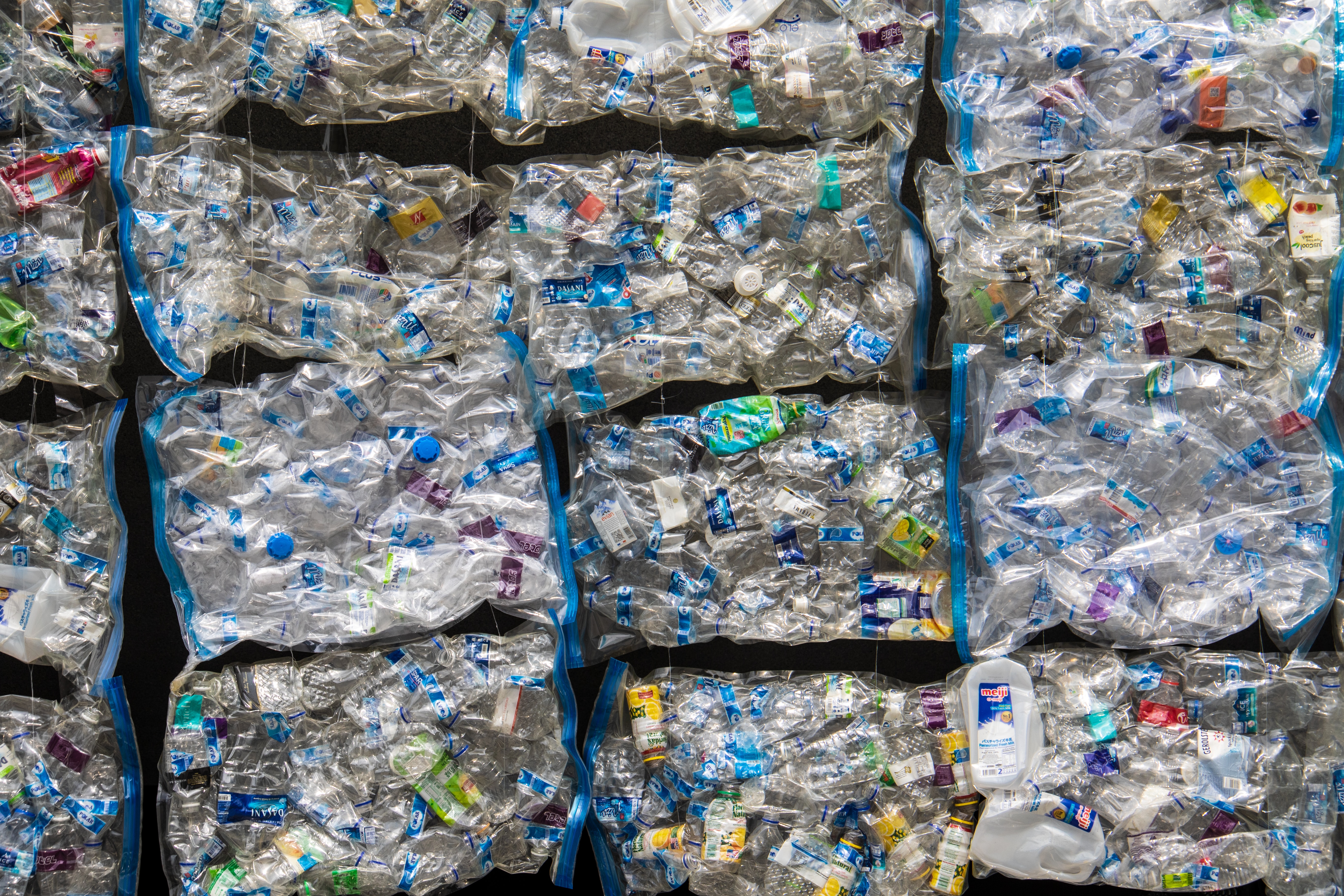By now, most of us are all too aware of the devastating impact that single-use plastics can have on our environment. Plastic is being used and thrown out at alarming rates, clogging up landfills and making its way to the oceans, where it’ll remain for hundreds of years (and break down into ingestible-sized microplastics in the meantime).
So we grab our canvas tote every time we hit the grocery store, bring along reusable coffee cups when we go on our coffee runs, and, of course, we primarily drink out of our reusable water bottles when it’s time to rehydrate.
For many of us, reducing our single-use plastic wherever we can in our daily life has become second nature. But still — why do so many people still use plastic water bottles when they travel?
The links between plastic usage and traveling have become increasingly clear in recent years, and it has highlighted the fact that there’s still a lot more that needs to be done to tackle our plastic problem from all angles. Luckily, there’s also plenty of hope for bringing down the use of single-use plastics during travel — and plenty of opportunities for all of us to become more sustainable travelers.

The rise of plastic pollution
The many impacts of plastic pollution on our environment are no secret. Single-use plastics are environmentally costly to make, take hundreds of years to biodegrade, and are clogging up our natural landscapes and oceans at staggering rates. In short, the earth is at constant risk of being choked by the sheer overwhelming mass of plastic that we’re throwing out.
As a result, the past couple of decades have seen huge strides being made to limit (or altogether eliminate) the enormity of our plastic problem. Individuals around the globe are personally making changes in their lifestyles to cut down on plastic consumption, and many governments around the world have made strides to reduce or eliminate single-use plastics completely. For example, Canada, Australia, and India have all made strides in drastically reducing or completely eliminating the use and production of single-use plastic.
But even though so many people are aware that single-use plastic is a problem, we’re still not seeing any significant changes when it comes to the total amount of plastic we’re consuming. In fact, single-use plastic is actually continuing to increase.
In 2021, 37 million tons of single-use plastics were produced from fossil fuels, which was up 6 million tons from 2019. Scarily, it’s also expected to increase by another 17 million tons by 2027. In other words, we’re still using plastic at incredibly high numbers, and there doesn’t seem to be any decrease in sight despite the many policies and personal lifestyle changes that have been implemented to cut it down.
Tourism and the plastic pollution crisis
Along with the rising production and use of single-use plastics, traveling is also definitely on the rise when compared to the last couple of years. A Forbes survey found that 87% of those surveyed said that they were going to travel as much as they did in 2022, and almost half of those surveyed said they wanted to travel more.
Unfortunately, plastic pollution and tourism are often found hand-in-hand. About 80% of tourism is in coastal areas (after all, what says “vacation” quite like relaxing by the seaside or walking along a beautiful beach?) Unfortunately, a large proportion of the plastic waste that ends up in the oceans comes from the discarded trash in those oceanside areas that we love to travel to so much.
Tourist season, therefore, is perhaps unsurprisingly a huge contributor to the plastic pollution issue. To highlight this, we just need to look at the busy Mediterranean Sea, one of the most popular vacation destinations in the world. A report by the World Wildlife Federation found that the busy summer season contributed to a whopping 40% increase in the amount of plastic entering the Mediterranean Sea versus the rest of the year.

Where is this plastic coming from?
So why, in 2023, are we still seeing such a big plastic problem, especially when it comes to travel?
Water bottles and other single-use plastic drink bottles are a huge culprit here. Whether it’s over concerns about the safety of tap water in an unfamiliar area to the simple convenience of single-use packaging, the water bottle industry is still booming. In 2021 alone, it generated almost 600 billion plastic bottles, which ultimately ended up as about 25 million tons of plastic filling up landfills and clogging up waterways.
While water bottles are still a major problem even at home, it’s especially interesting to note how so many people use plastic bottles when they’re traveling, even if they normally wouldn’t. The trend of plastic water bottle usage is so serious that many big traveling authorities have begun to make changes to their policies to try and limit the litter. For example, the San Francisco International Airport became the first airport to ban the sale of single-use plastic water bottles in 2019, after it sold almost 4 million plastic water bottles the year prior. Other airports are also following suit.
Of course, water bottles aren’t the sole source of plastic waste. Single-use toiletry containers are another major contributor (think: those individual shampoo and soap bottles that you see when you check into a hotel). However, many popular vacation destinations like California and New York are making moves to ban these wasteful packaging options for more sustainable options.
Ultimately, plastic is undeniably convenient, especially if you’re traveling and don’t want to lug around your usual stock of reusable cups, bags, and containers. However, this can actively add to issues of waste, litter, and plastic pollution, especially when we’re using them in the beautiful areas that we love to visit.

An easy solution: bring a filtering reusable water bottle along on your trips.
A lot of change needs to happen on a global scale to make a major impact on the mountains of plastic that we throw into the oceans. Luckily, projects like Transforming Tourism are campaigning to make travel more sustainable throughout the world.
One thing that we, as travelers, can do is to be mindful of our own plastic usage especially when we’re visiting areas outside of our homes. Switching to reusable water bottles can save an average of 156 plastic bottles every year, which is an enormous amount when you consider how many people prefer to buy single-use water bottles.
You might already be doing it at home, but it’s just as important to limit your single-use plastics when you’re traveling. Though it might seem like a safer choice to use a plastic water bottle, especially if we’re visiting an area that we aren’t familiar with, the truth is that many places around the world do have tap water that is safe to drink by legal standards (of course, this varies by place to place, so make sure to do a little bit of research first). By using a filtering water bottle in an area that has legally safe drinking water, you can further eliminate any potential contaminants, saving money and the planet in the process.
By taking the extra step of bringing reusable water bottles along with us on our trips, we can do our part to minimize the extreme impacts that plastic pollution has on our favorite destinations …. and hopefully preserve them for generations of travelers to come.
